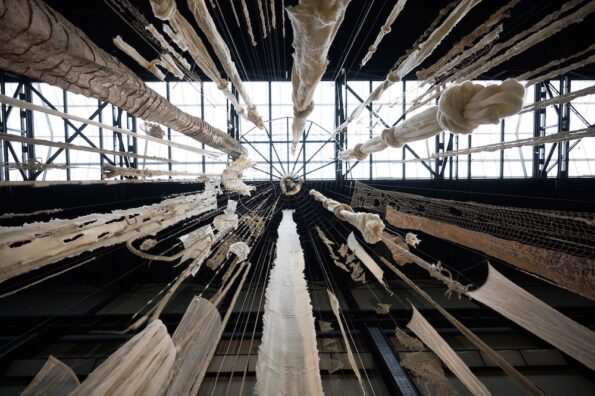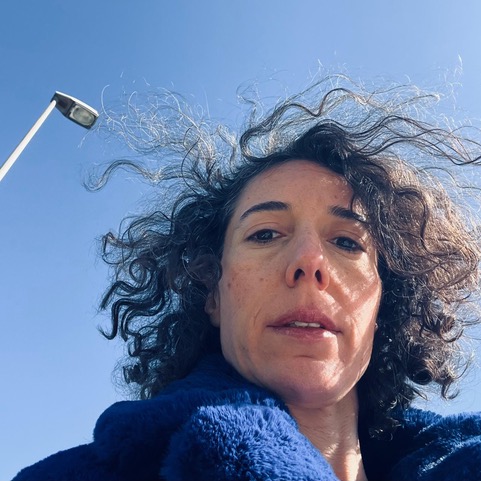Search
To search for an exact match, type the word or phrase you want in quotation marks.
A*DESK has been offering since 2002 contents about criticism and contemporary art. A*DESK has become consolidated thanks to all those who have believed in the project, all those who have followed us, debating, participating and collaborating. Many people have collaborated with A*DESK, and continue to do so. Their efforts, knowledge and belief in the project are what make it grow internationally. At A*DESK we have also generated work for over one hundred professionals in culture, from small collaborations with reviews and classes, to more prolonged and intense collaborations.
At A*DESK we believe in the need for free and universal access to culture and knowledge. We want to carry on being independent, remaining open to more ideas and opinions. If you believe in A*DESK, we need your backing to be able to continue. You can now participate in the project by supporting it. You can choose how much you want to contribute to the project.
You can decide how much you want to bring to the project.

When asked to write this article about how to practice mediation in the context of contemporary art, my first thought was: assuming we have agreed on what contemporary art is, why the use of term “mediation”? The word carries a load that suggests resolution, the softening of tensions, the forging of common ground. It leans heavily on the idea that we must bridge ambiguity to understanding. Yet this premise is worth troubling. To speak of mediation in art implies a gap, a distance between the work and its audience, presumed to be in need of closure. However, such a hypothesis compromises the complexity of contemporary art to a series of digestible narratives, prioritizing clarity over open interpretation. It also implies that the artwork itself is somehow incomplete or insufficient without the intervention of a mediator. This raises critical questions: Is the role of mediation to clarify and resolve, or to hold space for the uncertainties and provocations inherent in the artwork? And how does this process of mediation influence both the artwork’s reception and its very meaning?
This interplay between art’s essential ambiguity and the desire to make it comprehensible invites a closer consideration of how meaning is shaped and conveyed. An artwork is not a passive vessel waiting to be decoded. It resists our efforts to pin it down. It is useful to mention Adorno’s notion that art does not function mimetically or illustratively; it cannot be reduced to a message or a simple narrative. Rather, engaging with it is a matter of following its movement, of tracing how it unsettles, how it shifts and refuses to sit into fixed categories. Yet, in the world of contemporary art, this process is often turned into a kind of administrative task: an exercise in fitting the work into structures that are standardized, structures shaped by institutions, funding bodies, and bureaucratic priorities.
Les Nouveaux Commanditaires, a program initiated in the 1990s by the Belgian artist François Hers, invites citizens to commission projects addressing social, cultural, or local concerns. It brings together artists, mediators, and communities in an effort to connect art with everyday life. According to their description, mediators are “experts in contemporary art capable of ensuring that its requirements are respected.” Their job is to facilitate dialogue between artists, patrons, and institutions while coordinating public and private funding to bring these projects to life. There is credit in this, a belief that art can express the needs of communities and play a role in shaping the social fabric.
Yet I cannot help but wonder whether this framing carries a flip side. By embedding art so thoroughly within institutional processes, are we not confining it? Does the very structure intended to foster dialogue become a means of containing the work, of neutralizing its more unruly possibilities? It seems to me that to mediate – if we must use the term – is to dwell in this contradiction. It is to hold open the tension between what can be explained and what cannot, to recognize that meaning is always contingent, always in flux, while resisting the urge to flatten it into something manageable.
I am reminded of Cecilia Vicuña’s quipus, fragile knots and threads that do not impose meaning but puzzles and invite musing. They pull us into a relationship rather than offering themselves as objects to be neatly interpreted. If mediation is to be meaningful, it must sustain this kind of openness. It needs to allow for the possibility that meaning will remain unfinished, that some questions will not find easy answers.
Hito Steyerl’s critique of visibility is unavoidable here. Her concern is not only for artworks that attempt to visualize the invisible or hidden but addresses the problem that visibility itself is an ideology, one powerfully tied to the contemporary global order. This notion also came up in a recent deeply moving gathering of students of an encampment in Barcelona, critiquing the ambiguous connections between the knowledge production of art in academia with colonialism and capitalism. They argue that It is crucial that we accept that we cannot understand a work of art as a fact or an object of consumption, an object viewed and analyzed in a drone-like perspective.
Hyperrealism in painting or photography or even documentary film still cannot capture the totality of the reality of the depiction of the subject or movement. These visual remains point to the life outside the frame, a life that demands attention. Many artists prefer framing the objects in a way that opens the images to numerous readings, making it the responsibility of the viewer to account for narratives that existed prior to the photograph or work, narratives that allow the piece to exist at all.
I think here of Walid Raad and his fictional collective, The Atlas Group, which blurs the boundaries between fact and fiction, troubling the authority of archival narratives. His work underscores how mediation is never neutral, it is always implicated in shaping the narratives it claims to present.
At the time I first came to curating, there was still a certain unease with the term itself. Some called it facilitation, others mediation. Even now, the role remains fluid, as to curate is not simply to arrange and present, it is to create the conditions for something unexpected to emerge. There is an obvious ethical weight to this work. Whose voice is being amplified? Whose priorities are being served? Too often, the positioning of contemporary art aligns it with institutional agendas rather than allowing it to remain wild and unpredictable.
Even back in the sixties, artists like Gordon Matta-Clark and Joseph Beuys stated that art is not an object to be deciphered but a living force, something that disrupts and provokes rather than reassures. To make art more accessible, to smooth its rough edges for the sake of easy comprehension, is to dilute its power. The work is not to explain but to hold open a space where discomfort and uncertainty can exist. Mediation, in this sense, is not a matter of transmitting fixed meanings. It is about staying close to the tremor of what an artwork does; how it moves us, unsettles us, and changes over time and context.
There is something vital in the gaps, in the pauses where interpretation falters, where meaning flickers and refuses to resolve itself. Perhaps mediation is not a process at all but a kind of attentiveness, a willingness to listen, to wait, to allow the questions to remain. And in that act of allowing, something opens: an encounter that is unfinished, alive, and full of possibility. Anne Dufourmantelle’s reflections on risk and hospitality highlight the need for courage here; a commitment to leave space for the unknown. If mediation in contemporary art is to mean anything, it must go beyond mere interpretation. It must become a living process, one that invites risk, that embraces uncertainty, and that makes room for transformation. It is not a task of explanation but of presence; an opening where the artwork and the experience of the viewer might meet in all their complexity and subjectivity.
[Featured Image: Cecilia Vicuña: Brain Forest Quipu, Turbine Hall, Tate Modern, 2022]

Mayssa Fattouh is a curator and independent artist based in Barcelona. She holds a Diploma in Fine Arts from the Lebanese University (Beirut) and a Master of Philosophy and Media Arts from the European Graduate School (Switzerland). Her practice revolves around collective curation as a way to create shared spaces of resistance against the degrading effects of neoliberalism and colonialism. Her current research focuses on the issue of water as a weapon of colonization, as well as the politics of food in art.
"A desk is a dangerous place from which to watch the world" (John Le Carré)